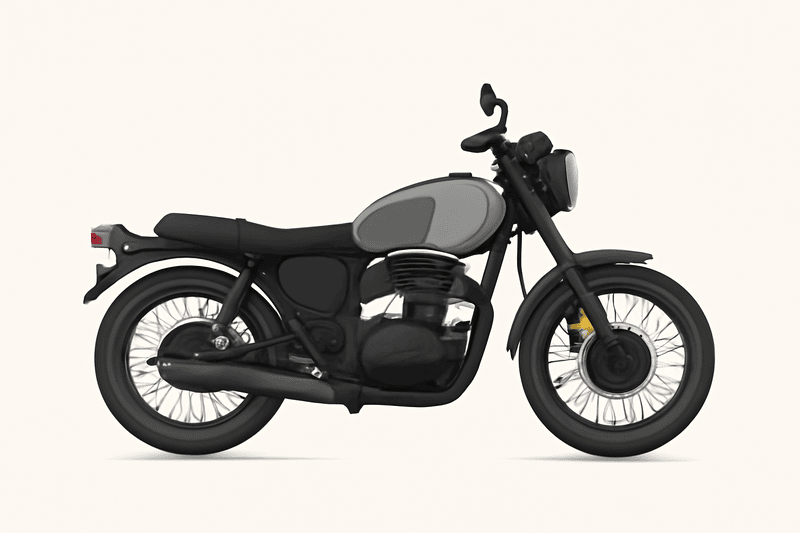As a professional bike mechanic, I often get asked by customers about bike tank capacity—what it is, how it affects your riding experience, and why it’s important. Whether you’re riding daily or going on a long road trip, understanding your bike’s fuel tank capacity is essential. In this blog, I’ll break down everything you need to know in simple terms.
Table of Contents
ToggleWhat is Bike Tank Capacity?
Simply put, bike tank capacity refers to how much fuel your bike’s fuel tank can hold. It’s usually measured in liters (L) and plays a big role in how far you can travel on a single tank of fuel.
The capacity of a bike’s tank can affect its weight, handling, and fuel efficiency. A larger tank means you can travel further, but it might also make your bike a bit heavier. A smaller tank means you’ll need to refuel more often, but your bike will likely be lighter and easier to handle.
How is Bike Tank Capacity Decided?
The size of a bike’s fuel tank is influenced by the type of bike and its engine size. For example, sports bikes generally have smaller tanks because they are designed for speed and performance, while bikes meant for long-distance riding, like cruisers or touring bikes, have larger tanks so you can ride for longer without stopping to refuel.
Things That Affect Bike Tank Capacity
Here are some key things that affect your bike’s fuel tank capacity:
1. Engine Size
Bikes with larger engines usually have bigger fuel tanks because they need more fuel to run. Smaller engine bikes might only need a smaller tank to keep things light and efficient.
2. Type of Bike
Touring bikes or cruisers, which are made for long trips, usually come with larger fuel tanks, so you don’t have to stop for fuel as often. On the other hand, sports and city commuter bikes tend to have smaller tanks to make the bike lighter and more agile.
3. Fuel Efficiency
Your bike’s mileage (how far it can go per liter of fuel) also matters. A bike with a bigger fuel tank can go further, but if it uses more fuel per kilometer, you’ll still need to refuel more often.
How Does Bike Tank Capacity Affect Your Ride?
1. Your Range
The main way tank capacity affects your ride is by determining your range—that’s how far you can go before you need to refuel. A bike with a bigger tank lets you travel longer distances without stopping for fuel, which is great for road trips or long highway rides.
2. Weight of the Bike
A larger fuel tank adds more weight to the bike. This can make the bike feel heavier, especially when turning or moving quickly. While a larger tank might make your bike feel more stable at higher speeds, it can also make it harder to handle in tight traffic.
3. How Often You Stop for Fuel
If your bike has a smaller tank, you’ll need to stop for fuel more often. This might break up your ride, but a lighter bike is easier to handle in the city, and smaller tanks usually make bikes feel more responsive.
Understanding Your Bike’s Fuel Efficiency
It’s important to know that tank capacity alone doesn’t tell you how far you can ride. The fuel efficiency of your bike (how many kilometers it can go per liter of fuel) also affects your range.
For example, if your bike has a 10-liter tank and gives 30 km per liter, you can travel up to 300 km on a full tank. But if your bike’s fuel efficiency is only 20 km per liter, that same 10-liter tank will take you just 200 km before you need to refuel.
How to Calculate Your Bike’s Range
Here’s an easy way to figure out how far you can go on a full tank:
Range (km) = Tank Capacity (L) x Fuel Efficiency (km/L)
Let’s say your bike has a 12-liter tank and a fuel efficiency of 25 km/L:
Range = 12 x 25 = 300 km
So, you can ride up to 300 km before needing to fill up again.
Table: Bike Tank Capacity vs. Fuel Efficiency
| Bike Type | Average Tank Capacity (L) | Average Fuel Efficiency (km/L) | Range (km) |
|---|---|---|---|
| Sports Bike | 10 | 18-20 | 180-200 |
| Cruiser Bike | 15 | 20-25 | 300-375 |
| Touring Bike | 18 | 25-30 | 450-540 |
| Commuter Bike | 8-12 | 30-45 | 240-540 |
Conclusion
Knowing your bike’s tank capacity is important for both short and long rides. It affects how often you’ll need to refuel and how far you can travel before stopping. Whether you ride in the city, take weekend trips, or go on long journeys, understanding your bike’s fuel tank helps you plan better.
If you need help with your bike’s fuel system or just want to check if everything is working smoothly, don’t hesitate to reach out to us at BikeProMech. We’re always here to help!






